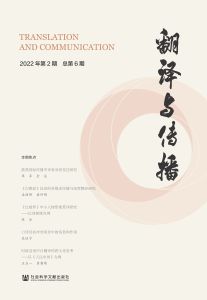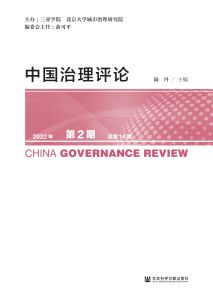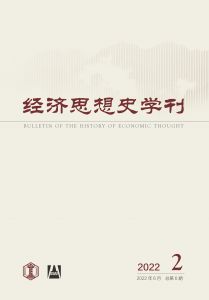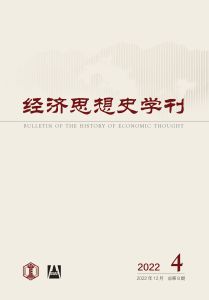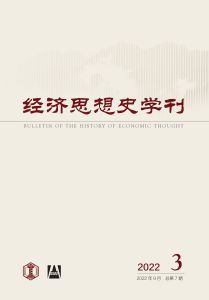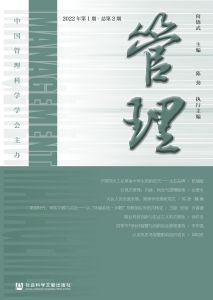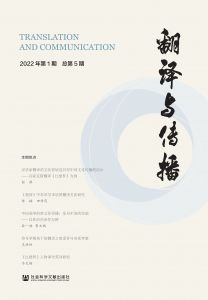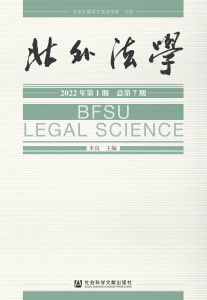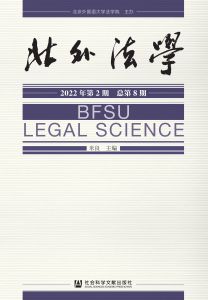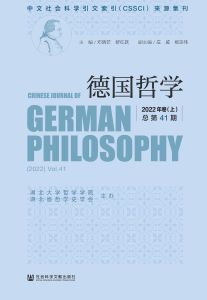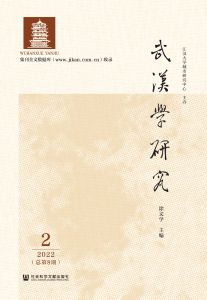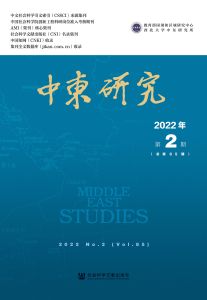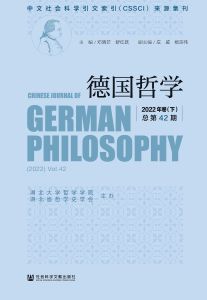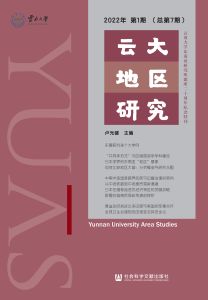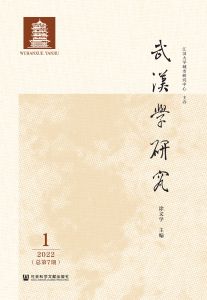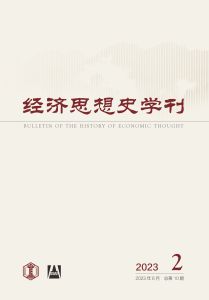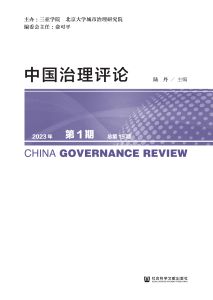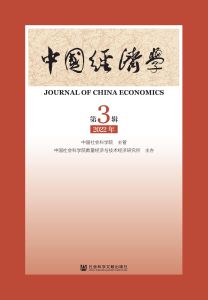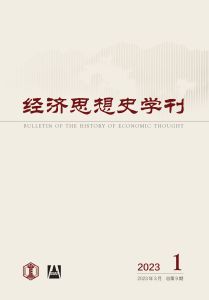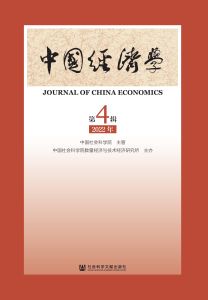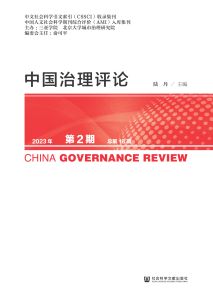首页 >
图书详情

图书简介
目录
参考文献
音频
视频
-
专题
-
工业稳增长:国际经验、现实挑战与政策导向
-
-
国民经济
-
面向共同富裕的基本公共服务均等化:行动逻辑与路径选择
-
人口流动、贸易与财政支出政策的地区性配置
-
-
产业经济
-
内贸成本、外贸成本与畅通国内大循环
-
增值税减税的效应:异质企业环境下的政策模拟
-
银行分支机构扩张与企业出口国内附加值率
-
-
工商管理
-
财政激励、市场一体化与企业跨地区投资
-
工业智能化会重塑企业地理格局吗
-
基金赚钱、基民不赚钱:业绩持续性感知与基金投资者行为
-
-
案例研究
-
人与AI协同的新型组织学习:基于场景视角的多案例研究
-
[1][1]〔1〕蔡昉.早熟的代价:保持制造业发展的理由和对策[J].国际经济评论,2022,(1):31-42.
[2][2]〔2〕郭克莎,彭继宗.制造业在中国新发展阶段的战略地位和作用[J].中国社会科学,2021,(5):128-149.
[3][3]〔3〕李万.注重破坏性创新推动开放式创新[N].学习时报,2018-04-25.
[4][4]〔4〕史丹,白骏骄.产业结构早熟对经济增长的影响及其内生性解释——基于互联网式创新力视角[J].中央财经大学学报,2019,(6):105-118.
[5][5]〔5〕[美]苏珊娜·伯杰.重塑制造业[M].廖丽华译.杭州:浙江教育出版社,2018.
[6][6]〔6〕习近平.扎实推动共同富裕[J].求是,2021,(20):4-8.
[7][7]〔7〕杨丹辉,渠慎宁.百年未有之大变局下全球价值链重构及国际生产体系调整方向[J].经济纵横,2021,(3):61-71.
[8][8]〔8〕詹晓宁,贾辉辉,齐凡.后疫情时代国际生产体系大转型:新趋势和未来方向[J].国际贸易,2021,(9):4-14.
[9][9]〔9〕赵伟.“十四五”期间中国经济发展不宜设定制造业占比指标[J].探索与争鸣,2021,(1):60-68.
[10][10]〔10〕邹多为,戴小河.稳字当头、稳中求进,在高质量发展路上坚定前行[N].新华每日电讯,2021-12-12.
[11][11]〔11〕ADB. Global Value Chain Development Report 2021:Beyond Production[EB/OL]. https://www.adb.org/ publications/global-value-chain-development-report-2021,2021.
[12][12]〔12〕Antràs,P. De-globalization?Global Value Chains in the Post-COVID-19 Age[EB/OL]. https://scholarharvardedu/ antras,2020.
[13][13]〔13〕Behun,M.,B.Gavurova,A.Tkacova,and A.Kotaskova. The Impact of the Manufacturing Industry on the Economic Cycle of European Union Countries[J]. Journal of Competitiveness,2018,10(3):23-39.
[14][14]〔14〕McKinsey Global Institute. Globalization in Transition:The Future of Trade and Value Chains[R]. McKinsey & Company,2019.
[15][15]〔15〕Pisano,G.P.,and W.C.Shih. Restoring American Competitiveness[J]. Harvard Business Review,2009,(7-8):114-125.
[16][16]〔16〕Seric,A.,and D.Winkler. COVID-19 Could Spur Automation and Reverse Globalization to Some Extent[EB/OL]. https://voxeu.org/article/covid-19-could-spur-automation-and-reverse-globalisation-some-extent,2020.
[17][17]〔17〕Szirmai,A.,and B.Verspagen. Manufacturing and Economic Growth in Developing Countries,1950—2005[J]. Structural Change and Economic Dynamics,2015,(34):46-59.
[18][18]〔18〕World Bank. World Economic Situation and Prospect[R]. World Bank,2022.
[19][19]〔19〕WTO. World Trade Report 2021:Economic Resilience and Trade[EB/OL]. https://www.wto.org/english/res_e/booksp_e/wtr21_e/09_opinionpiece_by-ralph-ossa_e.pdf,2021.
[20][20]〔1〕蔡萌,岳希明.中国社会保障支出的收入分配效应研究[J].经济社会体制比较,2018,(1):36-44.
[21][21]〔2〕何文炯,潘旭华.基于共同富裕的社会保障制度深化改革[J].江淮论坛,2021,(3):133-140.
[22][22]〔3〕金人庆.完善公共财政制度逐步实现基本公共服务均等化[J].农村财政与财务,2006,(12):4-6.
[23][23]〔4〕赖德胜,廖娟,刘伟.我国残疾人就业及其影响因素分析[J].中国人民大学学报,2008,(1):10-15.
[24][24]〔5〕李实.共同富裕的目标和实现路径选择[J].经济研究,2021,(11):4-13.
[25][25]〔6〕李实,沈扬扬.中国的减贫经验与展望[J].农业经济问题,2021,(5):12-19.
[26][26]〔7〕李实,吴凡,徐晓静.中国城镇居民养老金收入差距的变化[J].劳动经济研究,2020,(5):3-21.
[27][27]〔8〕李实,朱梦冰,詹鹏.中国社会保障制度的收入再分配效应[J].社会保障评论,2017,(4):3-20.
[28][28]〔9〕林闽钢.相对贫困的理论与政策聚焦——兼论建立我国相对贫困的治理体系[J].社会保障评论,2020,(1):85-92.
[29][29]〔10〕刘尚希.人力资本、公共服务与高质量发展[J].消费经济,2019,(5):3-5.
[30][30]〔11〕刘宇南.《国家基本公共服务体系“十二五”规划》中的若干重要问题探析[J].宏观经济管理,2013,(4):25-28.
[31][31]〔12〕楼继伟.完善转移支付制度推进基本公共服务均等化[J].中国财政,2006,(3):6-8.
[32][32]〔13〕陆杰华,郭芳慈,陈继华,陈迎港.新时代农村养老制度设计:历史脉络、现实困境与发展路径[J].中国农业大学学报(社会科学版),2021,(4):113-122.
[33][33]〔14〕倪红日,张亮.基本公共服务均等化与财政管理体制改革研究[J].管理世界,2012,(9):7-18.
[34][34]〔15〕习近平.扎实推动共同富裕[J].求是,2021,(20):4-8.
[35][35]〔16〕杨立雄.相对贫困概念辨析与治理取向[J].广东社会科学,2021,(4):180-193.
[36][36]〔17〕杨菊华.制度要素与流动人口的住房保障[J].人口研究,2018,(1):60-75.
[37][37]〔18〕杨晓军,陈浩.中国城乡基本公共服务均等化的区域差异及收敛性[J].数量经济技术经济研究,2020,(12):127-145.
[38][38]〔19〕郁建兴,任杰.共同富裕的理论内涵与政策议程[J].政治学研究,2021,(3):13-25.
[39][39]〔20〕郑功成.中国社会保障改革与经济发展:回顾与展望[J].中国人民大学学报,2018,(1):37-49.
[40][40]〔21〕郑功成.面向2035年的中国特色社会保障体系建设——基于目标导向的理论思考与政策建议[J].社会保障评论,2021,(1):3-23.
[41][41]〔22〕Lim,S.S.,R.L.Updike,A.S.Kaldjian,R.M.Barber,K.Cowling,H.York,J.Friedman,R.Xu,J.L. Whisnant,and H.J.Taylor. Measuring Human Capital:A Systematic Analysis of 195 Countries and Territories,1990—2016[J]. The Lancet,2018,(392):1217-1234.
[42][42]〔1〕陈诗一,刘朝良,冯博.资本配置效率、城市规模分布与福利分析[J].经济研究,2019,(2):133-147.
[43][43]〔2〕段巍,王明,吴福象.中国式城镇化的福利效应评价(2000—2017)——基于量化空间模型的结构估计[J].经济研究,2020a,(5):166-182.
[44][44]〔3〕段巍,吴福象,王明.政策偏向、省会首位度与城市规模分布[J].中国工业经济,2020b,(4):42-60.
[45][45]〔4〕柯善咨,赵曜.产业结构、城市规模与中国城市生产率[J].经济研究,2014,(4):76-88.
[46][46]〔5〕梁婧,张庆华,龚六堂.城市规模与劳动生产率:中国城市规模是否过小?——基于中国城市数据的研究[J].经济学(季刊),2015,(3):1053-1072.
[47][47]〔6〕刘修岩,李松林.房价、迁移摩擦与中国城市的规模分布——理论模型与结构式估计[J].经济研究,2017,(7):67-80.
[48][48]〔7〕王丽莉,乔雪.我国人口迁移成本、城市规模与生产率[J].经济学(季刊),2020,(1):165-188.
[49][49]〔8〕赵扶扬,陈斌开.土地的区域间配置与新发展格局——基于量化空间均衡的研究[J].中国工业经济,2021,(8):94-113.
[50][50]〔9〕Aguayo-Tellez,E.,M.A.Muendler,and J.P.Poole. Globalization and Formal Sector Migration in Brazil[J]. World Development,2010,38(6):840-856.
[51][51]〔10〕Allen,T.,and C.Arkolakis. Trade and the Topography of the Spatial Economy[J].Quarterly Journal of Economics,2014,129(3):1085-1140.
[52][52]〔11〕Anderson,J.E.,and E.V.Wincoop. Trade Costs[J]. Journal of Economic Literature,2004,42(3):691-751.
[53][53]〔12〕Baqaee,D.R.,and E.Farhi. Productivity and Misallocation in General Equilibrium[J]. Quarterly Journal of Economics,2020,135(1),105-163.
[54][54]〔13〕Blouri,Y.,and M.V.Ehrlich. On the Optimal Design of Place-Based Policies:A Structural Evaluation of EU Regional Transfers[J]. Journal of International Economics,2020,https://doi.org/10.1016/j.jinteco.2020.103319.
[55][55]〔14〕Bound,J.,and H.J.Holzer. Demand Shifts,Population Adjustments,and Labor Market Outcomes during the 1980s[J]. Journal of Labor Economics,2000,18(1):20-54.
[56][56]〔15〕Caliendo,L.,M.Dvorkin,and F.Parro. Trade and Labor Market Dynamics:General Equilibrium Analysis of the China Trade Shock[J]. Econometrica,2019,87(3):741-835.
[57][57]〔16〕Desmet,K.,and E.Rossi-Hansberg. Urban Accounting and Welfare[J]. American Economic Review,2013,103(6):2296-2327.
[58][58]〔17〕Diamond,R. The Determinants and Welfare Implications of U.S.Workers’ Diverging Location Choices by Skill:1980—2000[J]. American Economic Review,2016,106(3):479-524.
[59][59]〔18〕Eaton,J.,and S.S.Kortum. Technology,Geography,and Trade[J]. Econometrica,2002,70(5):1741-1779.
[60][60]〔19〕Fujita,M.,and J.F.Thisse. Economics of Agglomeration:Cities,Industrial Location and Globalization(2nd Edition)[M]. Cambridge:Cambridge University Press,2013.
[61][61]〔20〕Ghani,E.,A.G.Goswami,and W.R.Kerr. Highway to Success:The Impact of the Golden Quadrilateral Project for the Location and Performance of Indian Manufacturing[J]. Economic Journal,2016,126(591):317-357.
[62][62]〔21〕Head,K.,and J.Ries. Increasing Returns Versus National Product Differentiation as an Explanation for the Pattern of U.S.-Canada Trade[J]. American Economic Review,2001,91(4):858-876.
[63][63]〔22〕Hsieh,C.T.,and E.Moretti. Housing Constraints and Spatial Misallocation[J]. American Economic Journal:Macroeconomics,2019,11(2):1-39.
[64][64]〔23〕Kline,P.,and E.Moretti. Local Economic Development,Agglomeration Economies,and the Big Push:100 Years of Evidence from the Tennessee Valley Authority[J]. Quarterly Journal of Economics,2013,129(1):275-331.
[65][65]〔24〕Krugman,P. Increasing Returns and Economic Geography[J]. Journal of Political Economy,1991,99(3):483-499.
[66][66]〔25〕McCaig,B.,and N.Pavcnik. Export Markets and Labor Allocation in a Low-Income Country[J]. American Economic Review,2018,108(7):1899-1941.
[67][67]〔26〕Monte,F.,S.J.Redding,and E.Rossi-Hansberg. Commuting,Migration,and Local Employment Elasticities[J]. American Economic Review,2018,108(12):3855-3890.
[68][68]〔27〕Moretti,E. Real Wage Inequality[J]. American Economic Journal:Applied Economics,2013,5(1):65-103.
[69][69]〔28〕Notowidigdo,M.J. The Incidence of Local Labor Demand Shocks[J]. Journal of Labor Economics,2020,38(3):687-725.
[70][70]〔29〕Roback,J. Wages,Rents,and the Quality of Life[J]. Journal of Political Economy,1982,90(6):1257-1278.
[71][71]〔30〕Tombe,T.,and X.D.Zhu. Trade,Migration,and Productivity:A Quantitative Analysis of China[J]. American Economic Review,2019,109(5):1843-1872.
[72][72]〔31〕Waugh,M.E. International Trade and Income Differences[J]. American Economic Review,2010,100(5):2093-2124.
[73][73]〔1〕安虎森,皮亚彬,薄文广.市场规模、贸易成本与出口企业生产率“悖论”[J].财经研究,2013,(5):41-50.
[74][74]〔2〕陈媛媛.市场分割下的地区市场规模对工业部门出口的影响研究——只是简单的线性关系么[J].世界经济研究,2012,(4):35-40.
[75][75]〔3〕桂琦寒,陈敏,陆铭,陈钊.中国国内商品市场趋于分割还是整合:基于相对价格法的分析[J].世界经济,2006,(2):20-30.
[76][76]〔4〕行伟波,李善同.本地偏好、边界效应与市场一体化——基于中国地区间增值税流动数据的实证研究[J].经济学(季刊),2009,(4):1455-1474.
[77][77]〔5〕李善同,侯永志,刘云中,陈波.中国国内地方保护问题的调查与分析[J].经济研究,2004,(11):78-84.
[78][78]〔6〕陆铭,陈钊.分割市场的经济增长——为什么经济开放可能加剧地方保护[J].经济研究,2009,(3):42-52.
[79][79]〔7〕盛斌,毛其淋.贸易开放、国内市场一体化与中国省际经济增长:1985—2008年[J].世界经济,2011,(11):44-66.
[80][80]〔8〕唐宜红,林发勤.异质性企业贸易模型对中国企业出口的适用性检验[J].南开经济研究,2009,(6):88-99.
[81][81]〔9〕易靖韬.企业异质性、市场进入成本、技术溢出效应与出口参与决定[J].经济研究,2009,(9):106-115.
[82][82]〔10〕张杰,张培丽,黄泰岩.市场分割推动了中国企业出口吗[J].经济研究,2010,(8):29-41.
[83][83]〔11〕赵玉奇,柯善咨.市场分割、出口企业的生产率准入门槛与“中国制造”[J].世界经济,2016,(9):74-98.
[84][84]〔12〕郑毓盛,李崇高.中国地方分割的效率损失[J].中国社会科学,2003,(1):64-72.
[85][85]〔13〕周黎安.中国地方官员的晋升锦标赛模式研究[J].经济研究,2007,(7):36-50.
[86][86]〔14〕朱希伟,金祥荣,罗德明.国内市场分割与中国的出口贸易扩张[J].经济研究,2005,(12):68-76.
[87][87]〔15〕Albrecht,L.,and T.Tombe. Internal Trade,Productivity and Interconnected Industries:A Quantitative Analysis[J]. Canadian Journal of Economics,2016,49(1):237-263.
[88][88]〔16〕Bernard,A.B.,J.B.Jensen,and R.Z.Lawrence. Exporters,Jobs,and Wages in U.S.Manufacturing:1976—1987[J]. Brookings Papers on Economic Activity,1995,26:67-119.
[89][89]〔17〕Fan,C.S.,and X.Wei. The Law of One Price:Evidence from the Transitional Economy of China[J]. Review of Economics and Statistics,2006,88(4):682-697.
[90][90]〔18〕Head,K.,and J.Ries. Increasing Returns versus National Product Differentiation as an Explanation for the Pattern of U.S.-Canada Trade[J]. American Economic Review,2001,91(4):858-876.
[91][91]〔19〕Leontief,W.,and A.Strout. Multiregional Input-Output Analysis[M]. London:Palgrave Macmillan,1963.
[92][92]〔20〕Lu,D. Exceptional Exporter Performance?Evidence from Chinese Manufacturing Firms[D]. Manuscript,University of Chicago,2010.
[93][93]〔21〕Melitz,M.J. The Impact of Trade on Intra-industry Reallocations and Aggregate Industry Productivity[J]. Econometrica,2003,71(6):1695-1725.
[94][94]〔22〕Naughton,B. How Much Can Regional Integration Do to Unify China’s Markets[A]. Hope,A.C.et al.How Far Across the River[C]. California:Stanford University Press,2003.
[95][95]〔23〕Parsley,D.C.,and S.J.Wei. Convergence to the Law of One Price without Trade Barriers or Currency Fluctuations[J]. Quarterly Journal of Economics,1996,111(4):1210-1236.
[96][96]〔24〕Poncet,S. Measuring Chinese Domestic and International Integration[J]. China Economic Review,2003,14(1):1-22.
[97][97]〔25〕Poncet,S. A Fragmented China:Measure and Determinants of Chinese Domestic Market Disintegration[J]. Review of International Economics,2005,13(3):409-430.
[98][98]〔26〕Tombe,T.,and X.Zhu. Trade,Migration,and Productivity:A Quantitative Analysis of China[J]. American Economic Review,2019,109(5):1843-1872.
[99][99]〔27〕Xu,X. Have the Chinese Provinces Become Integrated under Reform[J]. China Economic Review,2002,13(2-3):116-133.
[100][100]〔28〕Young,A. The Razor’s Edge:Distortions and Incremental Reform in the People’s Republic of China[J]. The Quarterly Journal of Economics,2000,115(4):1091-1135.
[101][101]〔1〕陈晓光.增值税有效税率差异与效率损失——兼议对“营改增”的启示[J].中国社会科学,2013,(8):67-84.
[102][102]〔2〕陈烨,张欣,寇恩惠,刘明.增值税转型对就业负面影响的CGE模拟分析[J].经济研究,2010,(9):29-42.
[103][103]〔3〕樊海潮,张丽娜.中间品贸易与中美贸易摩擦的福利效应:基于理论与量化分析的研究[J].中国工业经济,2018,(9):41-59.
[104][104]〔4〕范子英,彭飞.“营改增”的减税效应和分工效应:基于产业互联的视角[J].经济研究,2017,(2):82-95.
[105][105]〔5〕李明,李德刚,冯强.中国减税的经济效应评估——基于所得税分享改革“准自然试验”[J].经济研究,2018,(7):121-135.
[106][106]〔6〕李戎,张凯强,吕冰洋.减税的经济增长效应研究[J].经济评论,2018,(4):3-17.
[107][107]〔7〕申广军,陈斌开,杨汝岱.减税能否提振中国经济?——基于中国增值税改革的实证研究[J].经济研究,2016,(11):70-82.
[108][108]〔8〕许伟,陈斌开.税收激励和企业投资——基于2004—2009年增值税转型的自然实验[J].管理世界,2016,(5):9-17.
[109][109]〔9〕聂海峰,刘怡.增值税转型对投资和就业的影响——中部地区增值税转型效果评价[R].“2009中国公共经济学论坛暨公共经济与管理国际会议”会议论文,2009.
[110][110]〔10〕聂辉华,方明月,李涛.增值税转型对企业行为和绩效的影响——以东北地区为例[J].管理世界,2009,(5):17-24.
[111][111]〔11〕聂辉华,贾瑞雪.中国制造业企业生产率与资源误置[J].世界经济,2011,(7):27-42.
[112][112]〔12〕尹恒,张子尧,曹斯蔚.社会保险降费的就业促进效应——基于服务业的政策模拟[J].中国工业经济,2021,(5):57-75.
[113][113]〔13〕尹恒,张子尧.需求异质与企业加成率估计[J].中国工业经济,2019,(12):60-77.
[114][114]〔14〕Ackerberg,D.,K.Caves,and G.Frazer. Identification Properties of Recent Production Function Estimators[J]. Econometrica,2015,83(6):2411-2451.
[115][115]〔15〕Aw,B.Y.,M.J.Roberts,and D.Y.Xu. R&D Investment,Exporting,and Productivity Dynamics[J]. American Economic Review,2011,101(4):1312-1344.
[116][116]〔16〕Berry,S. Estimating Discrete-Choice Models of Product Differentiation[J]. RAND Journal of Economics,1994,25(2):242-262.
[117][117]〔17〕Berry,S.,J.Levinsohn,and A.Pakes. Automobile Prices in Market Equilibrium[J]. Econometrica,1995,63(4):841-890.
[118][118]〔18〕Brandt,L.,J.V.Biesebroeck,and Y.Zhang. Creative Accounting or Creative Destruction?Firm-level Productivity Growth in Chinese Manufacturing[J]. Journal of Development Economics,2012,97(2):339-351.
[119][119]〔19〕De Loecker,J. Product Differentiation,Multiproduct Firms and Estimating the Impact of Trade Liberalization on Productivity[J]. Econometrica,2011,79(5):1407-1451.
[120][120]〔20〕De Loecker,J.,and F.Warzynski. Markups and Firm-Level Export Status[J]. American Economic Review,2012,102(6):2437-2471.
[121][121]〔21〕De Loecker,J.,P.Goldberg,A.Khandelwal,and N.Pavcnik. Prices,Markups and Trade Reform[J]. Econometrica,2016,84(2):445-510.
[122][122]〔22〕Doraszelski,U.,and J.Jaumandreu. R&D and Productivity:Estimating Endogenous Productivity[J]. Review of Economic Studies,2013,80(4):1338-1383.
[123][123]〔23〕Doraszelski,U.,and J.Jaumandreu. Measuring the Bias of Technological Change[J]. Journal of Political Economy,2018,126(3):1027-1084.
[124][124]〔24〕Grieco,P.,and R.McDevitt. Productivity and Quality in Health Care:Evidence from the Dialysis Industry[J]. Review of Economic Studies,2017,84(3):1071-1105.
[125][125]〔25〕Hsieh,C.,and P.J.Klenow. Misallocation and Manufacturing TFP in China and India[J]. Quarterly Journal of Economics,2009,124(4):1403-1448.
[126][126]〔26〕Jaumandreu,J.,and H.Yin. Cost and Product Advantages:A Firm-level Model for the Chinese Exports and Industry Growth[R]. CEPR Discussion Paper,2017.
[127][127]〔27〕Jaumandreu,J.,and H.Yin. Comparing Productivity When Products and Inputs Differ in Quality:China Manufacturing Growth 1998—2013[R]. Working Paper,Boston University and Renmin University of China,2018.
[128][128]〔28〕Levinsohn,J.,and A.Petrin. Estimating Production Functions Using Inputs to Control for Unobservables[J]. Review of Economic Studies,2003,70(2):317-341.
[129][129]〔29〕Liu,Q.,and Y.Lu. Firm Investment and Exporting:Evidence from China’s Value-added Tax Reform[J]. Journal of International Economics,2015,97(2):392-4403.
[130][130]〔30〕Liu,Y.,and J.Mao. How Do Tax Incentives Affect Investment and Productivity?Firm-Level Evidence from China[J]. American Economic Journal:Economic Policy,2019,11(3):261-291.
[131][131]〔31〕Olley,S.,and A.Pakes. The Dynamics of Productivity in the Telecommunications Equipment Industry[J]. Econometrica,1996,64(6):1263-1297.
[132][132]〔32〕Restuccia,D.,and R.Rogerson. Policy Distortions and Aggregate Productivity with Heterogeneous Establisments[J]. Review of Economic Dynamics,2008,11(4):707-720.
[133][133]〔33〕Weyl,E.G.,and M.Fabinger. Pass-Through as an Economic Tool:Principles of Incidence under Imperfect Competition[J]. Journal of Political Economy,2013,121(3):528-583.
[134][134]〔1〕樊纲,王小鲁,朱恒鹏.中国市场化指数:各地区市场化相对进程2011年报告[M].北京:经济科学出版社,2011.
[135][135]〔2〕高翔,刘啟仁,黄建忠.要素市场扭曲与中国企业出口国内附加值率:事实与机制[J].世界经济,2018,(10):26-50.
[136][136]〔3〕何砚,陆文香,姚磊.金融业扩张与出口企业竞争力[J].国际经贸探索,2019,(1):88-102.
[137][137]〔4〕姜付秀,蔡文婧,蔡欣妮,李行天.银行竞争的微观效应:来自融资约束的经验证据[J].经济研究,2019,(6):72-88.
[138][138]〔5〕金祥荣,茹玉骢,吴宏.制度、企业生产效率与中国地区间出口差异[J].管理世界,2008,(11):65-77.
[139][139]〔6〕李俊青,刘帅光,刘鹏飞.金融契约执行效率、企业进入与产品市场竞争[J].经济研究,2017,(3):136-150.
[140][140]〔7〕李宏亮,谢建国,杨继军.金融业开放与中国企业的出口国内增加值率[J].国际贸易问题,2021,(7):54-73.
[141][141]〔8〕李志生,金凌,孔东民.分支机构空间分布、银行竞争与企业债务决策[J].经济研究,2020,(10):141-158.
[142][142]〔9〕吕越,盛斌,吕云龙.中国的市场分割会导致企业出口国内附加值率下降吗[J].中国工业经济,2018,(5):5-23.
[143][143]〔10〕马光荣,李力行.金融契约效率、企业退出与资源误置[J].世界经济,2014,(10):77-103.
[144][144]〔11〕马光荣,刘明,杨恩艳.银行授信、信贷紧缩与企业研发[J].金融研究,2014,(7):76-93.
[145][145]〔12〕马述忠,张洪胜,王笑笑.融资约束与全球价值链地位提升——来自中国加工贸易企业的理论与证据[J].中国社会科学,2017,(1):83-107.
[146][146]〔13〕毛其淋,盛斌.对外经济开放、区域市场整合与全要素生产率[J].经济学(季刊),2011,(1):181-210.
[147][147]〔14〕毛其淋,许家云.外资进入如何影响了本土企业出口国内附加值[J].经济学(季刊),2018,(4):1453-1488.
[148][148]〔15〕邵朝对,苏丹妮,李坤望.服务业开放与企业出口国内附加值率:理论和中国证据[J].世界经济,2020,(8):123-147.
[149][149]〔16〕铁瑛,何欢浪.金融开放、示范效应与中国出口国内附加值率攀升——基于外资银行进入的实证研究[J].国际贸易问题,2020,(10):160-174.
[150][150]〔17〕许和连,成丽红,孙天阳.制造业投入服务化对企业出口国内增加值的提升效应——基于中国制造业微观企业的经验研究[J].中国工业经济,2017,(10):62-80.
[151][151]〔18〕闫志俊,于津平.出口企业的空间集聚如何影响出口国内附加值[J].世界经济,2019,(5):74-98.
[152][152]〔19〕杨瑞龙,章逸然,杨继东.制度能缓解社会冲突对企业风险承担的冲击吗[J].经济研究,2017,(8):140-154.
[153][153]〔20〕姚晓明,朱晟君.中国银行业基层网点的空间演化机制[J].地理研究,2020,(2):384-398.
[154][154]〔21〕姚耀军,吴文倩,王玲丽.外资银行是缓解中国企业融资约束的“白衣骑士”吗——基于企业异质性视角的经验研究[J].财经研究,2015,(10):58-68.
[155][155]〔22〕余淼杰,崔晓敏.人民币汇率和加工出口的国内附加值:理论及实证研究[J].经济学(季刊),2018,(3):1207-1234.
[156][156]〔23〕岳崴,张强.银行部门扩张、资源配置扭曲与经济增长[J].财经研究,2020,(9):123-137.
[157][157]〔24〕张杰,郑文平,新夫.中国的银行管制放松、结构性竞争和企业创新[J].中国工业经济,2017,(10):118-136.
[158][158]〔25〕张盼盼,张胜利,陈建国.融资约束、金融市场化与制造业企业出口国内增加值率[J].金融研究,2020,(4):48-69.
[159][159]〔26〕张璇,李子健,李春涛.银行业竞争、融资约束与企业创新——中国工业企业的经验证据[J].金融研究,2019,(10):98-116.
[160][160]〔27〕Antràs,P.,and E.Helpman. Global Sourcing[J]. Journal of Political Economy,2004,112(3):552-580.
[161][161]〔28〕Beck,T. Financial Dependence and International Trade[J]. Review of International Economics,2003,11(2):296-316.
[162][162]〔29〕Bellucci,A.,A.Borisov,and A.Zazzaro. Do Banks Price Discriminate Spatially?Evidence from Small Business Lending in Local Credit Markets[J]. Journal of Banking and Finance,2013,37(11):4183-4197.
[163][163]〔30〕Benfratello,L.,F.Schiantarelli,and A.Sembenelli. Banks and Innovation:Microeconometric Evidence on Italian Firms[J]. Journal of Financial Economics,2008,90(2):197-217.
[164][164]〔31〕Berger,A.N.,and G.F.Udell. A More Complete Conceptual Framework for SME Finance[J]. Journal of Banking and Finance,2006,30(11):2945-2966.
[165][165]〔32〕Berger,A.N.,C.H.S.Bouwman,and D.Kim. Small Bank Comparative Advantages in Alleviating Financial Constraints and Providing Liquidity Insurance over Time[J]. Review of Financial Studies,2017,30(10):3416-3454.
[166][166]〔33〕Berman,N.,and J.Héricourt. Financial Factors and the Margins of Trade:Evidence from Cross-Country Firm-Level Data[J]. Journal of Development Economics,2010,93(2):206-217.
[167][167]〔34〕Beverelli,C.,M.Fiorini,and B.Hoekman. Services Trade Policy and Manufacturing Productivity:The Role of Institutions[J]. Journal of International Economics,2017,104:166-182.
[168][168]〔35〕Cornaggia,J.,Y.Mao,X.Tian,and B.Wolfe. Does Banking Competition Affect Innovation[J]. Journal of Financial Economics,2015,115(1):189-209.
[169][169]〔36〕Crinò,R.,and L.Ogliari. Financial Frictions,Product Quality,and International Trade[R]. CEMFI Working Paper,2014.
[170][170]〔37〕Cull,R.,L.E.Davis,N.R.Lamoreaux,and J.L.Rosenthal. Historical Financing of Small-and Medium-Size Enterprises[J]. Journal of Banking and Finance,2006,30(11):3017-3042.
[171][171]〔38〕De la Torre,A.,M.S.M.Pería,and S.L.Schmukler. Bank Involvement with SMEs:Beyond Relationship Lending[J]. Journal of Banking and Finance,2010,34(9):2280-2293.
[172][172]〔39〕Degryse,H.,and S.Ongena. Distance,Lending Relationships,and Competition[J]. Journal of Finance,2005,60(1):231-266.
[173][173]〔40〕Kee,H.L.,and H.Tang. Domestic Value Added in Exports:Theory and Firm Evidence from China[J]. American Economic Review,2016,106(6):1402-1436.
[174][174]〔41〕Klagge,B.,and R.Martin. Decentralized versus Centralized Financial Systems:Is There a Case for Local Capital Markets[J]. Journal of Economic Geography,2005,5(4):387-421.
[175][175]〔42〕Knyazeva,A.,and D.Knyazeva. Does Being Your Bank’s Neighbor Matter[J]. Journal of Banking and Finance,2012,36(4):1194-1209.
[176][176]〔43〕Manova,K. Credit Constraints,Heterogeneous Firms,and International Trade[J]. Review of Economic Studies,2013,80(2):711-744.
[177][177]〔44〕Melitz,M.J.,and G.I.P.Ottaviano. Market Size,Trade,and Productivity[J]. Review of Economic Studies,2008,75(1):295-316.
[178][178]〔45〕Petersen,M.A.,and R.G.Rajan. Does Distance Still Matter?The Information Revolution in Small Business Lending[J]. Journal of Finance,2002,57(6):2533-2570.
[179][179]〔46〕Pistor,K.,R.Martin,and S.Gelfer. Law and Finance in Transition Economies[J]. Economics of Transition and Institutional Change,2000,8(2):325-368.
[180][180]〔47〕Porteous,D.J. The Development of Financial Centres:Location,Informnation,Externalities and Path Dependence[A]. Martin,R.L.Money and the Space Economy[C]. Chichester:Wiley Press,1999.
[181][181]〔48〕Shaffer,S. The Winner’s Curse in Banking[J]. Journal of Financial Intermediation,1998,7(40):359-392.
[182][182]〔49〕Skrastins,J.,and V.Vi. How Organizational Hierarchy Affects Information Production[J]. Review of Financial Studies,2019,32(2):564-604.
[183][183]〔50〕Xing,Y.,and N.Detert. How the Iphone Widens the United States Trade Deficit with the People’s Republic of China[R]. ADBI Working Paper,2010.
[184][184]〔1〕白重恩,杜颖娟,陶志刚,仝月婷.地方保护主义及产业地区集中度的决定因素和变动趋势[J].经济研究,2004,(4):29-40.
[185][185]〔2〕曹春方,周大伟,吴澄澄,张婷婷.市场分割与异地子公司分布[J].管理世界,2015,(9):92-103.
[186][186]〔3〕陈冬,孔墨奇,王红建.投我以桃,报之以李:经济周期与国企避税[J].管理世界,2016,(5):46-63.
[187][187]〔4〕陈思霞,许文立,张领祎.财政压力与地方经济增长——来自中国所得税分享改革的政策实验[J].财贸经济,2017,(4):37-53.
[188][188]〔5〕范子英,田彬彬.税收竞争、税收执法与企业避税[J].经济研究,2013,(9):99-111.
[189][189]〔6〕范子英,张军.财政分权、转移支付与国内市场整合[J].经济研究,2010,(3):53-64.
[190][190]〔7〕方军雄.政府干预、所有权性质与企业并购[J].管理世界,2008,(9):119-123.
[191][191]〔8〕郭金龙,王宏伟.中国区域间资本流动与区域经济差距研究[J].管理世界,2003,(7):45-58.
[192][192]〔9〕郭婧,马光荣.宏观经济稳定与国有经济投资:作用机理与实证检验[J].管理世界,2019,(9):49-64.
[193][193]〔10〕贺颖,吕冰洋.行政性分权与地区市场分割——基于地级市的研究[J].经济学报,2019,(4):127-157.
[194][194]〔11〕李明,李德刚,冯强.中国减税的经济效应评估——基于所得税分享改革“准自然试验”[J].经济研究,2018,(7):121-135.
[195][195]〔12〕李书娟,陈邱惠,徐现祥.不利冲击下经济增长恢复的经验——基于中国经济目标管理实践[J].经济研究,2021,(7):59-77.
[196][196]〔13〕刘小勇,李真.财政分权与地区市场分割实证研究[J].财经研究,2008,(2):88-98.
[197][197]〔14〕刘行,赵健宇,叶康涛.企业避税、债务融资与债务融资来源——基于所得税征管体制改革的断点回归分析[J].管理世界,2017,(10):113-129.
[198][198]〔15〕刘志彪,孔令池.从分割走向整合:推进国内统一大市场建设的阻力与对策[J].中国工业经济,2021,(8):20-36.
[199][199]〔16〕马光荣,程小萌,杨恩艳.交通基础设施如何促进资本流动——基于高铁开通和上市公司异地投资的研究[J].中国工业经济,2020,(6):5-23.
[200][200]〔17〕皮建才.中国地方政府间竞争下的区域市场整合[J].经济研究,2008,(3):115-124.
[201][201]〔18〕平新乔.政府保护的动机与效果——一个实证分析[J].财贸经济,2004,(5):3-10.
[202][202]〔19〕Poncet,S.中国市场正在走向“非一体化”?——中国国内和国际市场一体化程度的比较分析[J].世界经济文汇,2002,(2):3-17.
[203][203]〔20〕邵宁.国有企业改革实录(1998—2008)[M].北京:经济科学出版社,2014.
[204][204]〔21〕沈立人,戴园晨.我国“诸侯经济”的形成及其弊端和根源[J].经济研究,1990,(3):12-19.
[205][205]〔22〕宋冬林,范欣.分税制改革推动了市场统一吗[J].学习与探索,2015,(10):87-93.
[206][206]〔23〕宋渊洋,黄礼伟.为什么中国企业难以国内跨地区经营[J].管理世界,2014,(12):115-133.
[207][207]〔24〕田彬彬,范子英.税收分成、税收努力与企业逃税——来自所得税分享改革的证据[J].管理世界,2016,(12):36-46.
[208][208]〔25〕夏立军,陆铭,余为政.政企纽带与跨省投资——来自中国上市公司的经验证据[J].管理世界,2011,(7):128-140.
[209][209]〔26〕银温泉,才婉茹.我国地方市场分割的成因和治理[J].经济研究,2001,(6):3-12.
[210][210]〔27〕余明桂,潘红波.政治关系、制度环境与民营企业银行贷款[J].管理世界,2008,(8):9-21.
[211][211]〔28〕臧跃茹.资产重组中的市场分割问题[J].宏观经济研究,2001,(3):22-25.
[212][212]〔29〕郑京平.中国“县际竞争”发展模式的利弊分析[J].中国国情国力,2010,(9):4-6.
[213][213]〔30〕郑毓盛,李崇高.中国地方分割的效率损失[J].中国社会科学,2003,(1):64-72.
[214][214]〔31〕周黎安.中国地方官员的晋升锦标赛模式研究[J].经济研究,2007,(7):36-50.
[215][215]〔32〕Boisot,M.,and M.W.Meyer. Which Way through the Open Door?Reflections on the Internationalization of Chinese Firms[J]. Management and Organization Review,2008,4(3):349-365.
[216][216]〔33〕Faccio,M. Politically Connected Firms[J]. American Economic Review,2007,96(1):369-386.
[217][217]〔34〕Giroud,X.,and J.Rauh. State Taxation and the Reallocation of Business Activity:Evidence from Establishment-Level Data[J]. Journal of Political Economy,2019,127(3):1262-1316.
[218][218]〔35〕Mobarak,A.M.,and D.P.Purbasari. Corrupt Protection for Sale to Firms:Evidence from Indonesia[R]. Yale University Working Paper,2006.
[219][219]〔36〕Musgrave,R. Who Should Tax,Where and What[A]. Mclure,C. Tax Assignment in Federal Countries[C]. Canberra:Australian National University Press,1983.
[220][220]〔37〕Qian,Y.,and B.R. Weingast.Federalism as a Commitment to Preserving Market Incentives[J]. Journal of Economic Perspectives,1997,11(4):83-92.
[221][221]〔38〕Tang,T.,P.L.L.Mo,and K.H.Chan. Tax Collector or Tax Avoider?An Investigation of Intergovernmental Agency Conflicts[J]. The Accounting Review,2017,92(2):247-270.
[222][222]〔39〕Young,A. The Razor’s Edge:Distortions and Incremental Reform in the People’s Republic of China[J]. Quarterly Journal of Economics,2000,115(4):1091-1135.
[223][223]〔40〕Yu,J.H.,L.A.Zhou,and G.Z.Zhu. Strategic Interaction in Political Competition:Evidence from Spatial Effects across Chinese Cities[J]. Regional Science and Urban Economics,2016,57(3):23-37.
[224][224]〔1〕安同良,杨晨.互联网重塑中国经济地理格局:微观机制与宏观效应[J].经济研究,2020,(2):4-19.
[225][225]〔2〕陈建军,陈国亮,黄洁.新经济地理学视角下的生产性服务业集聚及其影响因素研究——来自中国222个城市的经验证据[J].管理世界,2009,(4):83-95.
[226][226]〔3〕陈彦斌,林晨,陈小亮.人工智能、老龄化与经济增长[J].经济研究,2019,(7):47-63.
[227][227]〔4〕郭家堂,骆品亮.互联网对中国全要素生产率有促进作用吗[J].管理世界,2016,(10):34-49.
[228][228]〔5〕何小钢,梁权熙,王善骝.信息技术、劳动力结构与企业生产率——破解“信息技术生产率悖论”之谜[J].管理世界,2019,(9):65-80.
[229][229]〔6〕罗勇,曹丽莉.中国制造业集聚程度变动趋势实证研究[J].经济研究,2005,(8):106-115.
[230][230]〔7〕吕大国,耿强,简泽,卢任.市场规模、劳动力成本与异质性企业区位选择——中国地区经济差距与生产率差距之谜的一个解释[J].经济研究,2019,(2):36-53.
[231][231]〔8〕毛中根,武优勐.我国西部地区制造业分布格局、形成动因及发展路径[J].数量经济技术经济研究,2019,(3):3-19.
[232][232]〔9〕曲玥,蔡昉,张晓波.“飞雁模式”发生了吗?——对1998—2008年中国制造业的分析[J].经济学(季刊),2013,(3):757-776.
[233][233]〔10〕孙早,侯玉琳.工业智能化如何重塑劳动力就业结构[J].中国工业经济,2019,(5):61-79.
[234][234]〔11〕孙早,侯玉琳.工业智能化与产业梯度转移:对“雁阵理论”的再检验[J].世界经济,2021,(7):29-54.
[235][235]〔12〕王书斌.工业智能化升级与城市层级结构分化[J].世界经济,2020,(12):102-125.
[236][236]〔13〕王小鲁,樊纲,胡李鹏.中国分省份市场化指数报告(2018)[M].北京:社会科学文献出版社,2019.
[237][237]〔14〕王业强,魏后凯.产业地理集中的时空特征分析——以中国28个两位数制造业为例[J].统计研究,2006,(6):28-33.
[238][238]〔15〕王永钦,董雯.机器人的兴起如何影响中国劳动力市场?——来自制造业上市公司的证据[J].经济研究,2020,(10):159-175.
[239][239]〔16〕魏后凯,白玫.中国上市公司总部迁移现状及特征分析[J].中国工业经济,2008,(9):13-24.
[240][240]〔17〕魏下海,郭凯明,吴春秀.数字技术、用工成本与企业搬迁选择[J].中国人口科学,2021,(1):104-116.
[241][241]〔18〕文东伟,冼国明.中国制造业的空间集聚与出口:基于企业层面的研究[J].管理世界,2014,(10):57-74.
[242][242]〔19〕吴建峰,符育明.经济集聚中马歇尔外部性的识别——基于中国制造业数据的研究[J].经济学(季刊),2012,(2):675-690.
[243][243]〔20〕徐维祥,张筱娟,刘程军.长三角制造业企业空间分布特征及其影响机制研究:尺度效应与动态演进[J].地理研究,2019,(5):1236-1252.
[244][244]〔21〕杨继东,罗路宝.产业政策、地区竞争与资源空间配置扭曲[J].中国工业经济,2018,(12):5-22.
[245][245]〔22〕Aghion,P.,B.F.Jones,and C.I.Jones. Artificial Intelligence and Economic Growth[R]. NBER Working Paper,2017.
[246][246]〔23〕Acemoglu,D.,and P.Restrepo. Robots and Jobs:Evidence from U.S.Labor Markets[J]. Journal of Political Economy,2020a,128(6):2188-2244.
[247][247]〔24〕Acemoglu,D.,and P.Restrepo. The Wrong Kind of AI?Artificial Intelligence and the Future of Labor Demand[J]. Economy and Society,2020b,13(1):25-35.
[248][248]〔25〕Bao,C.,Z.Chen,and J.Wu. Chinese Manufacturing on the Move:Factor Supply or Market Access[J]. China Economic Review,2013,26(9):170-181.
[249][249]〔26〕Bessen,J. Automation and Jobs:When Technology Boosts Employment[J]. Economic Policy,2019,34(100):589-626.
[250][250]〔27〕Boustan,L.P.,C.Frydman,and R.A.Margo. Human Capital in History:The American Record[M]. Chicago:University of Chicago Press,2014.
[251][251]〔28〕Brynjolfsson,E.,and T.Mitchell. What Can Machine Learning Do?Workforce Implications[J]. Science,2017,358(6370):1530-1534.
[252][252]〔29〕Cheng,H.,R.Jia,D.Li,and H.Li. The Rise of Robots in China[J]. Journal of Economic Perspectives,2019,33(2):71-88.
[253][253]〔30〕Frey,C.B.,and M.A.Osborne. The Future of Employment:How Susceptible Are Jobs to Computerisation[J]. Technological Forecasting and Social Change,2017,114(1):254-280.
[254][254]〔31〕Furman,J.,and R.Seamans. AI and the Economy[J]. Innovation Policy and the Economy,2019,19(1):161-191.
[255][255]〔32〕Gokan,T.,S.Kichko,and J.F.Thisse. How Do Trade and Communication Costs Shape the Spatial Organization of Firms[J]. Journal of Urban Economics,2019,113:103191.
[256][256]〔33〕Krugman,P.,and A.J.Venables. Integration,Specialization,and Adjustment[J]. European Economic Review,1996,40(3-5):959-967.
[257][257]〔34〕Keller,W. Geographic Localization of International Technology Diffusion[J]. American Economic Review,2002,92(1):120-142.
[258][258]〔35〕Lewbel,A. Using Heteroscedasticity to Identify and Estimate Mismeasured and Endogenous Regressor Models[J]. Journal of Business & Economic Statistics,2012,30(1):67-80.
[259][259]〔36〕Long,C.,and X.Zhang. Patterns of China’s Industrialization:Concentration,Specialization,and Clustering[J]. China Economic Review,2012,23(3):593-612.
[260][260]〔37〕Prettner,K.,and H.Strulik. The Lost Race Against the Machine:Automation,Education and Inequality in an R&D——Based Growth Model[R]. CEGE Discussion Papers,2017.
[261][261]〔38〕Leamer,E.E.,and M.Storper. The Economic Geography of the Internet Age[J]. Journal of International Business Studies,2001,32(4):641-665.
[262][262]〔39〕Wen,M. Relocation and Agglomeration of Chinese Industry[J]. Journal of Development Economics,2004,73(1):329-347.
[263][263]〔1〕李志冰,刘晓宇.基金业绩归因与投资者行为[J].金融研究,2019,(2):192-210.
[264][264]〔2〕陆蓉,陈百助,徐龙炳,谢新厚.基金业绩与投资者的选择——中国开放式基金赎回异常现象的研究[J].经济研究,2007,(6):39-50.
[265][265]〔3〕莫泰山,朱启兵.为什么基金投资人的投资回报低于基金行业的平均回报——基于“聪明的钱”效应实证检验的解释[J].金融研究,2013,(11):193-206.
[266][266]〔4〕石川,刘洋溢,连祥斌.因子投资:方法与实践[M].北京:电子工业出版社,2020.
[267][267]〔5〕徐龙炳,顾力绘.基金经理逆境投资能力与基金业绩[J].财经研究,2019,(8):127-139.
[268][268]〔6〕余剑峰,林兟,文柱柱,何为.公募基金名义收益率与投资人实现收益率——公募基金发展受限原因初探[EB/OL]. http://www.pbcsf.tsinghua.edu.cn/upload/default/20210330/1838cce7c82b4946b6bf45a1e84ab9b8.pdf,2021.
[269][269]〔7〕左大勇,陆蓉.理性程度与投资行为——基于机构和个人基金投资者行为差异研究[J].财贸经济,2013,(10):59-69.
[270][270]〔8〕Akbas,F.,and E.Genc. Do Mutual Fund Investors Overweight the Probability of Extreme Payoffs in the Return Distribution[J]. Journal of Financial and Quantitative Analysis,2020,55(1):223-261.
[271][271]〔9〕Andrikogiannopoulou,A.,and F. Papakonstantinou. Reassessing False Discoveries in Mutual Fund Performance:Skill,Luck,or Lack of Power[J]. Journal of Finance,2019,74(5):2667-2688.
[272][272]〔10〕Barber,B.M.,and T.Odean. The Behavior of Individual Investors[A]. Constantinides,G.M.,M.Harris,and R.M.Stulz. Handbook of the Economics of Finance 2[C]. Amsterdam:Elsevier,2013.
[273][273]〔11〕Barber,B.M.,H.Xing,and T.Odean. Which Factors Matter to Investors?Evidence from Mutual Fund Flows[J]. Review of Financial Studies,2016,29(10):2600-2642.
[274][274]〔12〕Ben-David,I.,J.Li,A.Rossi,and Y.Song. What Do Mutual Fund Investors Really Care about[R]. Fisher College of Business Working Paper,2019.
[275][275]〔13〕Berk,J.B.,and R.C.Green. Mutual Fund Flows and Performance in Rational Markets[J]. Journal of Political Economy,2004,112(6):1269-1295.
[276][276]〔14〕Brown,S.J.,and W.N.Goetzmann. Performance Persistence[J]. Journal of Finance,1995,50(2):679-698.
[277][277]〔15〕Carhart,M.M. On Persistence in Mutual Fund Performance[J]. Journal of Finance,1997,52(1):57-82.
[278][278]〔16〕Da,Z.,U.G.Gurun,and M.Warachka. Frog in the Pan:Continuous Information and Momentum[J]. Review of Financial Studies,2014,27(7):2171-2218.
[279][279]〔17〕Dichev,I.D. What Are Stock Investors’Actual Historical Returns?Evidence from Dollar-Weighted Returns[J]. American Economic Review,2007,97(1):386-401.
[280][280]〔18〕Fama,E.F.,and K.R.French. Common Risk Factors in The Returns on Stocks and Bonds[J]. Journal of Financial Economics,1993,33(1):3-56.
[281][281]〔19〕Friesen,G.C.,and T.R.A.Sapp. Mutual Fund Flows and Investor Returns:An Empirical Examination of Fund Investor Timing Ability[J]. Journal of Banking and Finance,2007,31(9):2796-2816.
[282][282]〔20〕Gabaix,X. Behavioral Inattention[A]. Bernheim,B.D.,S.,DellaVigna,and D.,Laibson. Handbook of Behavioral Economics:Applications and Foundations[C]. Amsterdam:Elsevier,2019.
[283][283]〔21〕Han,B.,P.Sui,and W.Yang. Prospect Theory and Mutual Fund Flows[R]. SSRN Working Paper,2021.
[284][284]〔22〕Harvey,C.R.,and Y.Liu. Cross-sectional Alpha Dispersion and Performance Evaluation[J]. Journal of Financial Economics,2019,134(2):273-296.
[285][285]〔23〕Huang,J.C.,K.D.Wei,and H.Yan. Investor Learning and Mutual Fund Flows[R]. SSRN Working Paper,2012.
[286][286]〔24〕Hu,S.,C.Xiang,and X.Quan. Attention,Lottery,or Salience?The Impact of Extreme Payoffs on Chinese Mutual Fund Flows[R]. SSRN Working Paper,2020.
[287][287]〔25〕Kacperczyk,M.,S.V.Nieuwerburgh,and L.Veldkamp. Time-Varying Fund Manager Skill[J]. Journal of Finance,2014,69(4):1455-1484.
[288][288]〔26〕Kaniel,R.,and R.Parham. WSJ Category Kings——The Impact of Media Attention on Consumer and Mutual Fund Investment Decisions[J]. Journal of Financial Economics,2017,123(2):337-356.
[289][289]〔27〕Karagiannis,N.,and K.Tolikas. Tail Risk and the Cross-Section of Mutual Fund Expected Returns[J]. Journal of Financial and Quantitative Analysis,2019,54(1):425-447.
[290][290]〔28〕Li,C.W.,A.Tiwari,and L.Tong. Investment Decisions under Ambiguity:Evidence from Mutual Fund Investor Behavior[J]. Management Science,2017,63(8):2397-2771.
[291][291]〔29〕Peng,L.,and W.Xiong. Investor Attention,Overconfidence and Category Learning[J]. Journal of Financial Economics,2006,80(3):563-602.
[292][292]〔30〕Petersen,M.A. Estimating Standard Errors in Finance Panel Data Sets:Comparing Approaches[J]. Review of Financial Studies,2009,22(1):435-480.
[293][293]〔31〕Song,Y. The Mismatch Between Mutual Fund Scale and Skill[J]. Journal of Finance,2020,75(5):2555-2589.
[294][294]〔1〕任晓明,李熙.自我升级智能体的逻辑与认知问题[J].中国社会科学,2019,(12):46-61.
[295][295]〔2〕王永贵,汪寿阳,吴照云,吴晓波,毛基业,戚聿东,张维,苏宗伟,朱旭峰,杨开峰,杨立华,席酉民,李新春,张玉利,徐向艺,刘志阳,闫妍,魏江,郜亮亮.深入贯彻落实习近平总书记在哲学社会科学工作座谈会上的重要讲话精神,加快构建中国特色管理学体系[J].管理世界,2021,(6):1-35.
[296][296]〔3〕肖峰.人工智能与认识论的哲学互释:从认知分型到演进逻辑[J].中国社会科学,2020,(6):49-71.
[297][297]〔4〕肖静华,胡杨颂,吴瑶.成长品:数据驱动的企业与用户互动创新案例研究[J].管理世界,2020,(3):183-205.
[298][298]〔5〕肖静华,吴小龙,谢康,吴瑶.信息技术驱动中国制造转型升级——美的智能制造跨越式战略变革纵向案例研究[J].管理世界,2021,(3):161-179.
[299][299]〔6〕谢康,夏正豪,肖静华.大数据成为现实生产要素的企业实现机制:产品创新视角[J].中国工业经济,2020,(5):42-60.
[300][300]〔7〕杨光,侯钰.工业机器人的使用、技术升级与经济增长[J].中国工业经济,2020,(10):138-156.
[301][301]〔8〕Argote,L. Organizational Learning:Creating,Retaining,and Transferring Knowledge[M]. Berlin:Springer Science and Business Media,2012.
[302][302]〔9〕Argote,L. Organization Learning:A Theoretical Framework[M]. Boston,MA:Springer,2013.
[303][303]〔10〕Argote,L.,and E.Miron-Spektor. Organizational Learning:From Experience to Knowledge[J]. Organization Science,2011,22(5):1123-1137.
[304][304]〔11〕Argote,L.,and H.Manpreet. Organizational Learning and Management of Technology[J]. Production and Operations Management,2017,26(4):579-590.
[305][305]〔12〕Avgar,A.,P.Tambe,and L.M.Hitt. Built to Learn:How Work Practices Affect Employee Learning during Healthcare Information Technology Implementation[J]. MIS Quarterly,2018,42(2):645-660.
[306][306]〔13〕Choudhury,P.,E.Starr,and A.Rajshree. Machine Learning and Human Capital Complementarities:Experimental Evidence on Bias Mitigation[J]. Strategic Management Journal,2020,41(8):1381-1411.
[307][307]〔14〕Danneels E.,and R.Sethi. New Product Exploration under Environmental Turbulence[J]. Organization Science,2011,22(4):1026-1039.
[308][308]〔15〕Grover,V.,R.H.L.Chiang,T.P.Liang,and D.Zhang. Creating Strategic Business Value from Big Data Analytics:A Research Framework[J]. Journal of Management Information Systems,2018,35(2):388-423.
[309][309]〔16〕Gupta,A.K.,K.G.Smith,and C.E.Shalley. The Interplay between Exploration and Exploitation[J]. Academy of Management Journal,2006,49(4):693-706.
[310][310]〔17〕Haefner,N.,J.Wincent,V.Parida,and O.Gassmann. Artificial Intelligence and Innovation Management:A Review,Framework,and Research Agenda[J]. Technological Forecasting and Social Change,2021,162:120392.
[311][311]〔18〕Hansen,R.,and S.S.Kien. Hummel’s Digital Transformation Toward Omnichannel Retailing:Key Lessons Learned[J]. MIS Quarterly Executive,2015,14(2):51-66.
[312][312]〔19〕Holzinger,A. Interactive Machine Learning for Health Informatics:When Do We Need the Human-in-the-loop[J]. Brain Informatics,2016,3(2):119-131.
[313][313]〔20〕Jarrahi,M.H. Artificial Intelligence and the Future of Work:Human-AI Symbiosis in Organizational Decision Making[J]. Business Horizons,2018,61(4):577-586.
[314][314]〔21〕Kaplan,A.,and M.Haenlein. Siri,Siri,in My Hand:Who’s the Fairest in the Land?On the Interpretations,Illustrations,and Implications of Artificial Intelligence[J]. Business Horizons,2019,62(1):15-25.
[315][315]〔22〕Kellogg,K.C.,M.A.Valentine.,and A.Christin. Algorithms at Work:The New Contested Terrain of Control[J]. Academy of Management Annals,2020,14(1):366-410.
[316][316]〔23〕Koryak,O.,A.Lockett,J.Hayton,N.Nicolaou,and K.Mole. Disentangling the Antecedents of Ambidexterity:Exploration and Exploitation[J]. Research Policy,2018,47(2):413-427.
[317][317]〔24〕Lavie,D.,U.Stettner,and M.L.Tushman. Exploration and Exploitation within and across Organizations[J]. Academy of Management Annals,2010,4(1):109-155.
[318][318]〔25〕Lee,I.,and Y.J.Shin. Machine Learning for Enterprises:Applications,Algorithm Selection,and Challenges[J]. Business Horizons,2020,63(2):157-170.
[319][319]〔26〕Makarius,E.E.,D.Mukherjee,J.D.Fox,and A.K.Fox. Rising with the Machines:A Sociotechnical Framework for Bringing Artificial Intelligence into the Organization[J]. Journal of Business Research,2020,120:262-273.
[320][320]〔27〕March,J.G. Exploration and Exploitation in Organizational Learning[J]. Organization Science,1991,2(1):71-87.
[321][321]〔28〕Miles,M.B.,and A.M.Huberman. Qualitative Data Analysis[M]. Los Angeles,CA:Sage,1994.
[322][322]〔29〕Osiyevskyy,O.,G.Shirokova,and P.Ritala. Exploration and Exploitation in Crisis Environment:Implications for Level and Variability of Firm Performance[J]. Journal of Business Research,2020,114:227-239.
[323][323]〔30〕Park,Y.K.,P.A.Pavlou,and N.Saraf. Configurations for Achieving Organizational Ambidexterity with Digitization[J]. Information Systems Research,2020,31(4):1376-1397.
[324][324]〔31〕Raisch,S.,and S.Krakowski. Artificial Intelligence and Management:The Automation-Augmentation Paradox[J]. Academy of Management Review,2020,46(1):192-210.
[325][325]〔32〕Rampersad,G. Robot Will Take Your Job:Innovation for an Era of Artificial Intelligence[J]. Journal of Business Research,2020,116:68-74.
[326][326]〔33〕Ransbotham,S.,S.Khodabandeh,D.Kiron,F.Candelon,M.Chu,and B.LaFountain. Expanding AI’s Impact with Organizational Learning[R]. MIT Sloan Management Review and Boston Consulting Group,2020.
[327][327]〔34〕Reichstein,M.,G.Camps-Valls,B.Stevens,M.Jung,J.Denzler,and N.Carvalhais. Deep Learning and Process Understanding for Data-driven Earth System Science[J]. Nature,2019,566(7743):195-204.
[328][328]〔35〕Rockart,S.F.,and K.Wilson. Learning in Cycles[J]. Organization Science,2019,30(1):70-87.
[329][329]〔36〕Saldanha,T.J.V,A.Sahaym,S.Mithas,M.G.Andrade-Rojas,A.Kathuria,and H.Lee. Turning Liabilities of Global Operations into Assets:IT-enabled Social Integration Capacity and Exploratory Innovation[J]. Information Systems Research,2020,31(2):361-382.
[330][330]〔37〕Seeber,I.,E.Bittner,R.O.Briggs,T.de Vreede,G.J.De Vreede,A.Elkins,and G.Schwabe. Machines as Teammates:A Research Agenda on AI in Team Collaboration[J]. Information and Management,2020,57(2):103-174.
[331][331]〔38〕Shrestha,Y.R.,S.M.Ben-Menahem,and G.Von Krogh. Organizational Decision-making Structures in the Age of Artificial Intelligence[J]. California Management Review,2019,61(4):66-83.
[332][332]〔39〕Wilson,H.J.,and P.R.Daugherty. Collaborative Intelligence:Humans and AI Are Joining Forces[J]. Harvard Business Review,2018,96(4):114-123.
[展开]


